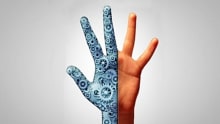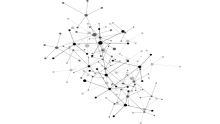Here’s the evolving philosophy of motivating HiPos in the digital age
HiPo Week Read similar articles

The industry we operate in today is largely driven by multifarious digital technologies like IoT, Big Data, and AI. In the recent past, organizations have inevitably geared up to inculcate digital transformation of their business systems and processes in tune with the evolving paradigm of business.
A critical question organizations need to ask themselves is- Are we adapting our talent strategies to the changing times?
HiPos (High Potential employees) are the key ingredient that spells success for any organization. Naturally, a lot of emphases is required to be placed on motivating them towards enhanced performance. To be future proof in ensuring the long-term sustainability of the business, organizations need to focus on devising revamped talent strategies which can motivate critical talent to achieve self and organizational objectives.
When organizations think of employee motivation, traditionally they turn towards increasing incentives. However, what many organizations fail to appreciate is the fact that the notion of motivators has changed with time. Baby Boomers in the 70’s were motivated by career longevity, annuity, and post-retirement benefits. The 80’s & 90’s heralded a shift towards higher salaries and monetary incentives. The early 2000’s saw organizations realizing the importance of retaining HiPos through non-monetary benefits such as healthcare facilities and paid sabbaticals, given the awareness and plethora of opportunities available to the key talent. Millennial HiPos in the Digital era seeks further alignment of their personal and professional goals and more meaning to their contributions towards the overall organizational objectives.
HiPos today strive for a hefty salary, bonus, and monetary incentives, but they also seek balance.
Let’s have a look at some of the motivators for HiPos in today’s world:
- Self-motivation & Purpose- Organizations are focusing on providing further clarity to HiPos on what digitization means for them and how it can enable them to perform better. With transparency and a clearer purpose, HiPos are intrinsically motivated to push boundaries, stretch beyond the call of duty and surpass expectations.
- Autonomy & Trust- HiPos are inspired by a desire for significance and when encouraged to act as leaders regardless of their role are likely to outperform their peers. Organizations may look to increase their trust in the capabilities and intent of their HiPos to ensure a higher degree of engagement as well as superior results.
- Strategic developmental experiences- Continual learning should be a mantra for motivating HiPos, especially during times of disruptive change. Today, HiPos exhibit proclivity towards development methods which are more situation-based, exciting and pertinent. Organizations need to emphasize on developing digital and leadership competencies with tailored apps and micro learning platforms that provide flexible learning.
- Flexibility- The digital era has created job roles or has enabled most of the traditional roles to transform in a set-up where there is no need of working from an office or together in teams. The idea is to motivate individuals and not teams which gives the organizations the power to customize its incentives and benefits for each employee.
- Emotional Appeal- The digital era has enabled tracking of employee performance by introducing new non-intrusive systems that are emotionally appealing. Organizations are replacing age-old biometric systems with happiness indicators to track employee emotions instead of a daily attendance. Another example is a walk-in attendance system that uses facial recognition for marking attendance encouraging freedom with discipline.
- Performance Parameters- Increasing flexibility is also changing the way organizations are evaluating performance. The emphasis is more on productivity instead of hours spent in office inducing more self- governance.
The theory of motivation is perpetually evolving and is leaving corporations behind. The transformation in today's motivational techniques is largely attributed to the changing world of work. Most organizations are grappling to crack the code to HiPo engagement and retention. In the coming future, organizations need to equip themselves in such a manner that they focus not only on the jobs HiPos do but also the skills they have. Tracking their HiPos’ skill footprints and mapping the same with the organization’s objectives would then be the need of the hour. The focus is more on the skills an individual has to offer and not just the end goals. Additionally, organizations would need to look at their HiPos as their most important customer segment and deliver to them a holistic employee experience. They might want to keep in mind that not every employee is motivated by the same factors and there is an increasing emphasis on introducing cafeteria benefits which are unique to the needs and preferences of each HiPo.









